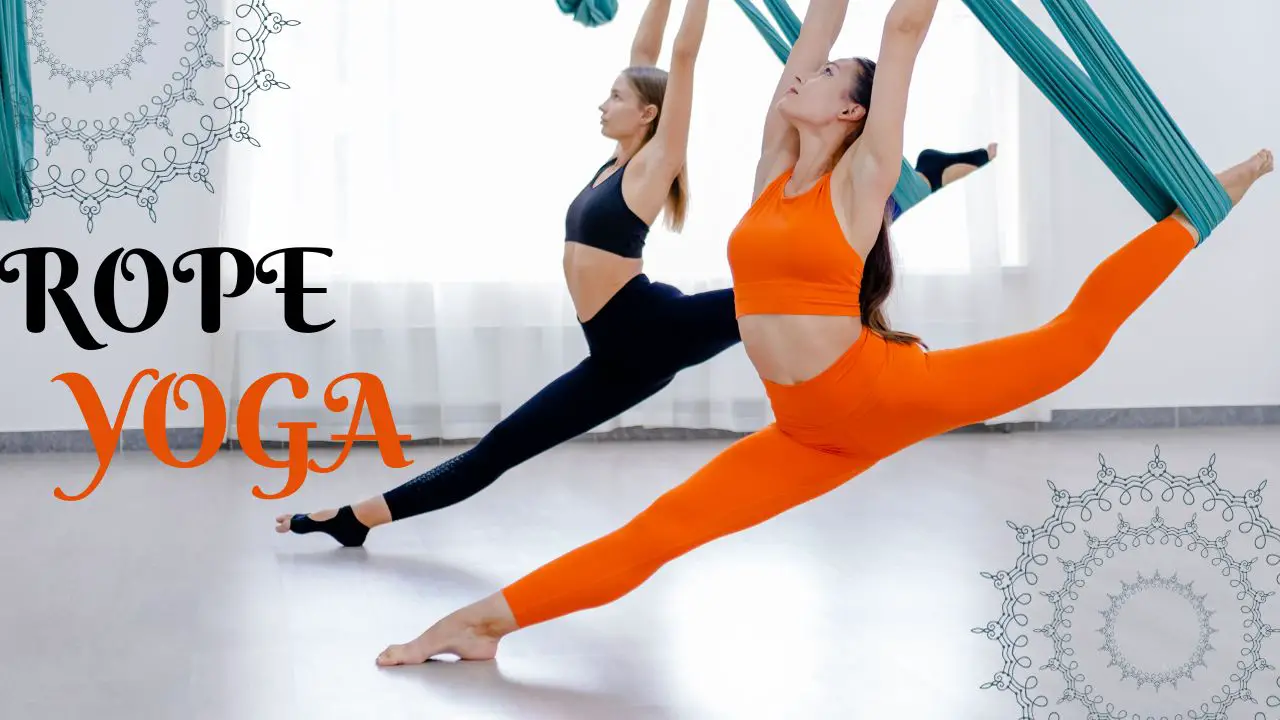Rope yoga, often referred to as “yoga with props,” is a dynamic and challenging form of yoga that utilizes ropes and straps to enhance flexibility, strength, and alignment. In this comprehensive guide, we will delve deep into the world of rope yoga, exploring its many facets, techniques, and the myriad benefits it offers. Whether you’re a seasoned yogi looking to elevate your practice or a beginner seeking a unique way to improve your physical and mental well-being, rope yoga has something to offer for everyone.
Table of Contents
Introduction to Rope Yoga
Rope yoga is a modern innovation in the world of yoga that infuses traditional yoga practices with the added support of ropes and straps. It’s a concept that has gained popularity in recent years due to its unique approach to enhancing one’s yoga practice. Let’s begin by understanding the fundamentals.
What is Rope Yoga?
Rope yoga, also known as yoga with props, is a form of yoga that incorporates the use of specialized ropes and straps. These props are employed to deepen stretches, provide support, and improve alignment in various yoga poses.
The practice involves attaching ropes to a wall or a sturdy structure, allowing practitioners to use them as extensions of their limbs. By holding onto these ropes, individuals can access deeper stretches and achieve poses that might be challenging to do unaided.
The Origins of Rope Yoga
The origins of rope yoga can be traced back to the teachings of B.K.S. Iyengar, a renowned yoga guru from India. Iyengar yoga, which focuses on precise alignment and the use of props, laid the foundation for rope yoga. The practice gained momentum in the Western world, where it was adapted and expanded upon.
How Rope Yoga Differs from Traditional Yoga
Rope yoga distinguishes itself from traditional yoga in several ways. While both forms emphasize the importance of alignment, flexibility, and strength, rope yoga takes it a step further by integrating props into the practice. This key difference allows for a more accessible and supportive approach to yoga, making it suitable for practitioners of all levels.
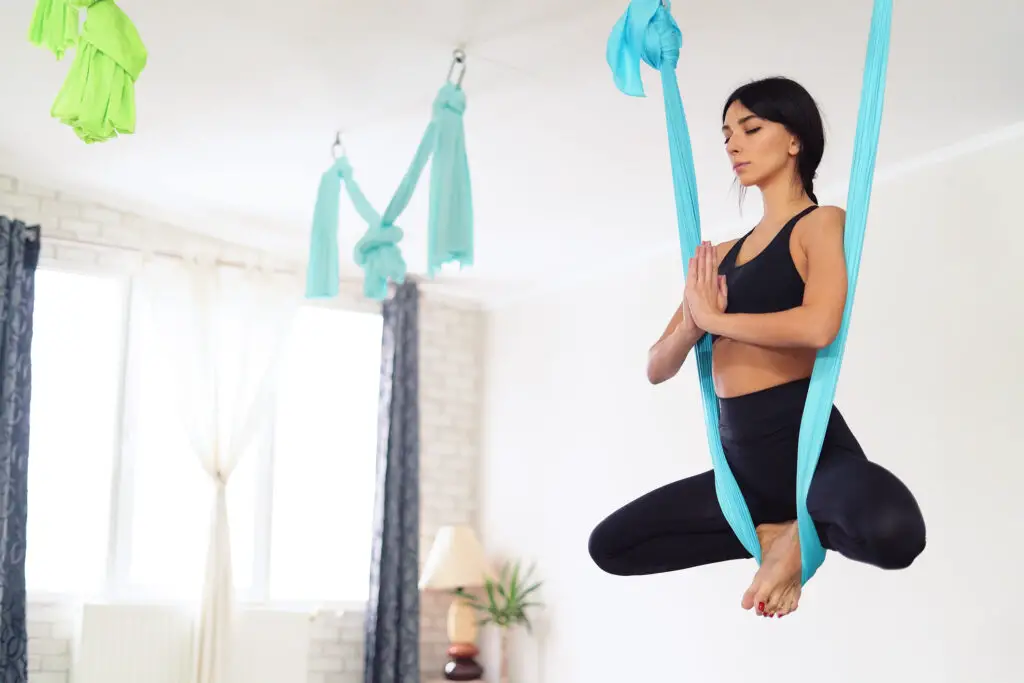
Benefits of Rope Yoga
One of the primary reasons for the growing popularity of rope yoga is the multitude of benefits it offers. Let’s explore these benefits in detail.
Improved Flexibility
Rope yoga is an excellent way to enhance flexibility. The ropes provide external support, allowing practitioners to ease into deep stretches that may be challenging to achieve on their own. Over time, this can lead to a significant improvement in flexibility.
Enhanced Strength
The practice of rope yoga also promotes strength development. Holding onto ropes while performing various poses engages different muscle groups, helping individuals build physical strength. This is particularly beneficial for those looking to tone their bodies and improve overall muscle function.
Better Alignment
Proper alignment is a fundamental aspect of yoga. Rope yoga places a strong emphasis on alignment, as the ropes help practitioners achieve the correct positioning in each pose. This not only reduces the risk of injury but also ensures that the intended benefits of the pose are fully realized.
Stress Relief
Like all forms of yoga, rope yoga is an effective stress reliever. The practice encourages relaxation and mindfulness, helping individuals manage and reduce stress levels.
Increased Mind-Body Awareness
Rope yoga enhances mind-body awareness. By using ropes to make adjustments and alignments, practitioners develop a deeper understanding of their bodies, how they move, and how they can improve their practice.
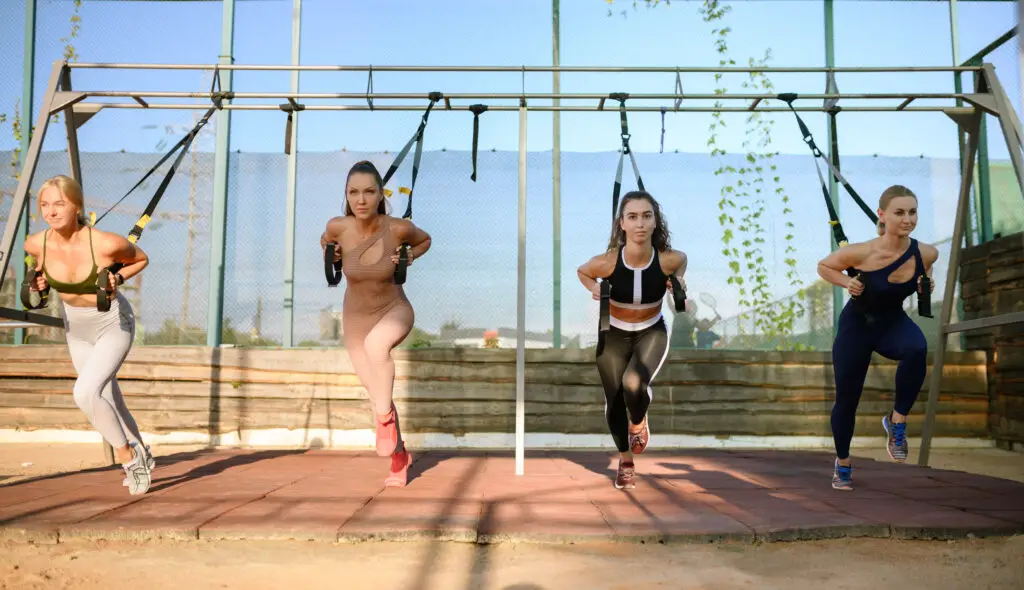
Essential Equipment for Rope Yoga
To fully embrace the world of rope yoga, it’s essential to have the right equipment at your disposal. Here are the key items you’ll need:
Yoga Ropes
Yoga ropes are the backbone of rope yoga practice. They are typically made of durable, high-quality material and come in various lengths to accommodate different poses and levels of flexibility. The ropes are attached to a wall or other secure structures, providing stability and support during practice.
Yoga Straps
Yoga straps are versatile tools used in rope yoga to improve flexibility and alignment. They are made of durable fabric and come with adjustable buckles, making them easy to use for various poses. Straps are particularly useful in seated and standing poses, helping individuals achieve correct alignment and reach deeper stretches.
Wall Ropes
Wall ropes are an essential component of rope yoga, allowing practitioners to perform a wide range of poses and stretches. These ropes are secured to a wall, offering stability and support for inversions, deep backbends, and various alignment adjustments.
With the right equipment in hand, you’re well-prepared to embark on your rope yoga journey.
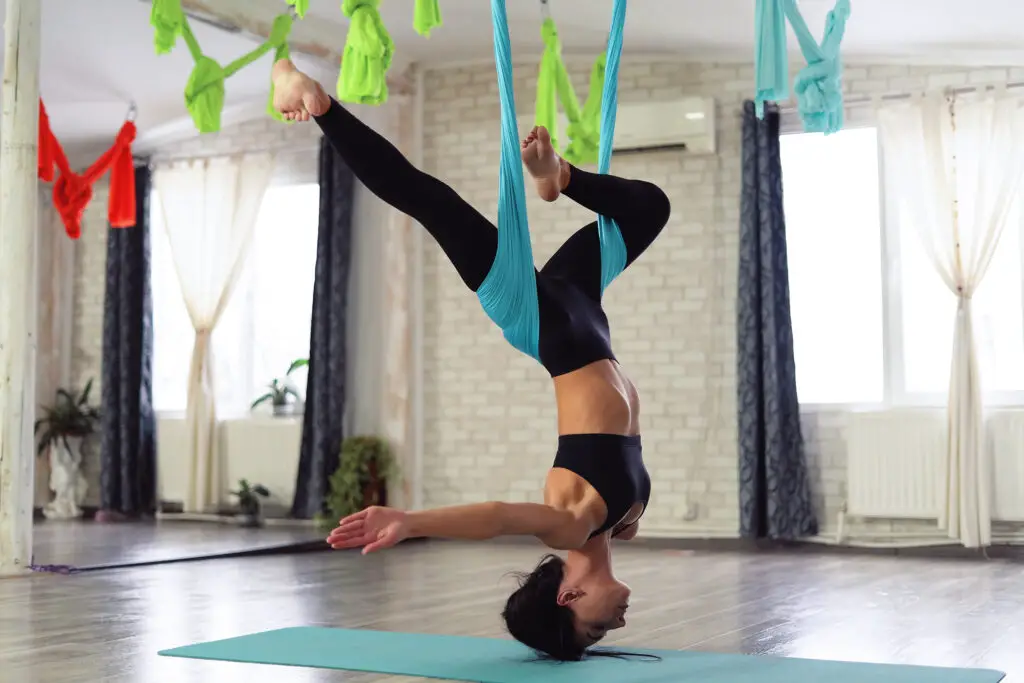
Common Poses and Techniques
Now that we’ve covered the basics let’s delve into some common rope yoga poses and techniques that you can incorporate into your practice.
Adho Mukha Svanasana (Downward Dog)
One of the most recognized yoga poses, the downward dog is enhanced with the use of ropes. By holding onto the ropes and extending the body in a triangular shape, practitioners can achieve a more profound stretch and better alignment.
Uttanasana (Forward Fold)
Forward folds are known for their ability to stretch the hamstrings and lower back. With the assistance of ropes, you can maintain proper alignment and reach deeper into this pose.
Sarvangasana (Shoulder Stand)
The shoulder stand is a powerful inversion that requires balance and core strength. Ropes provide essential support for this pose, making it accessible to a wider range of practitioners.
Paschimottanasana (Seated Forward Bend)
The seated forward bend is an excellent stretch for the lower back and hamstrings. Using straps in this pose can help individuals with limited flexibility gradually ease into the full expression of the pose.
Vrksasana (Tree Pose)
The tree pose is a balancing posture that improves concentration and stability. Ropes can be used for additional support to help maintain balance during this pose.
Ardha Chandrasana (Half Moon Pose)
The half moon pose requires a combination of strength and balance. Ropes aid in maintaining stability and alignment, allowing practitioners to explore the pose more effectively.
Savasana (Corpse Pose)
The final relaxation pose, savasana, can be enhanced with the use of ropes. By providing gentle support and alignment, ropes help individuals fully relax and release tension.
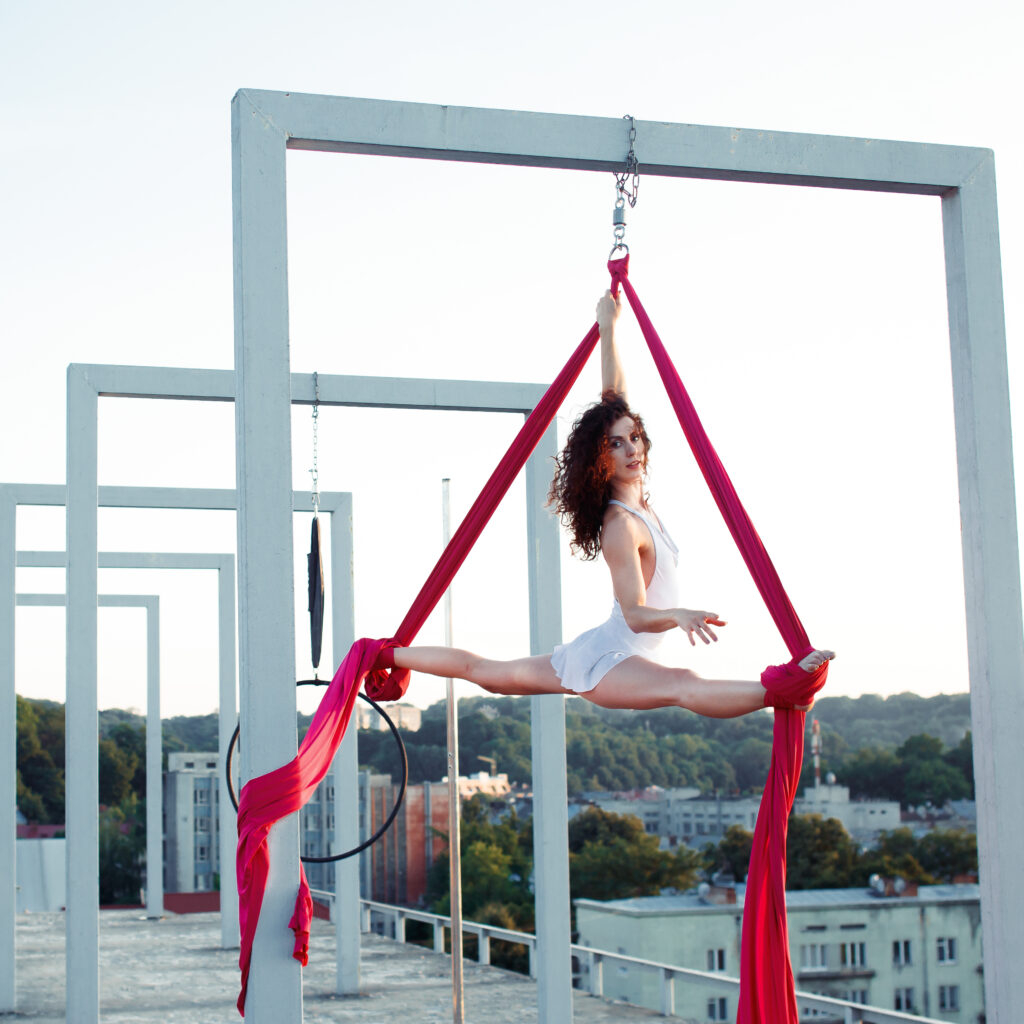
Rope Yoga and Alignment
A crucial aspect of rope yoga is its emphasis on alignment. Let’s explore how the practice improves alignment and ensures that each pose is performed correctly.
The Role of Yoga Ropes in Alignment
Yoga ropes serve as guides to achieve proper alignment. By holding onto the ropes, practitioners can make precise adjustments, ensuring that their bodies are in the correct position for each pose.
Achieving a Neutral Spine
Proper alignment in rope yoga often involves maintaining a neutral spine. This is crucial for avoiding unnecessary strain on the back and ensuring that the pose’s benefits are fully realized.
The Importance of Shoulder Alignment
Shoulder alignment is a key focus in rope yoga, especially in poses like the shoulder stand and backbends. Ropes provide support and help individuals align their shoulders correctly, reducing the risk of injury.
Safeguarding Knees and Hips
Rope yoga poses often require deep stretches, which can put stress on the knees and hips if not executed properly. The use of ropes ensures that these joints are protected and properly aligned during practice.
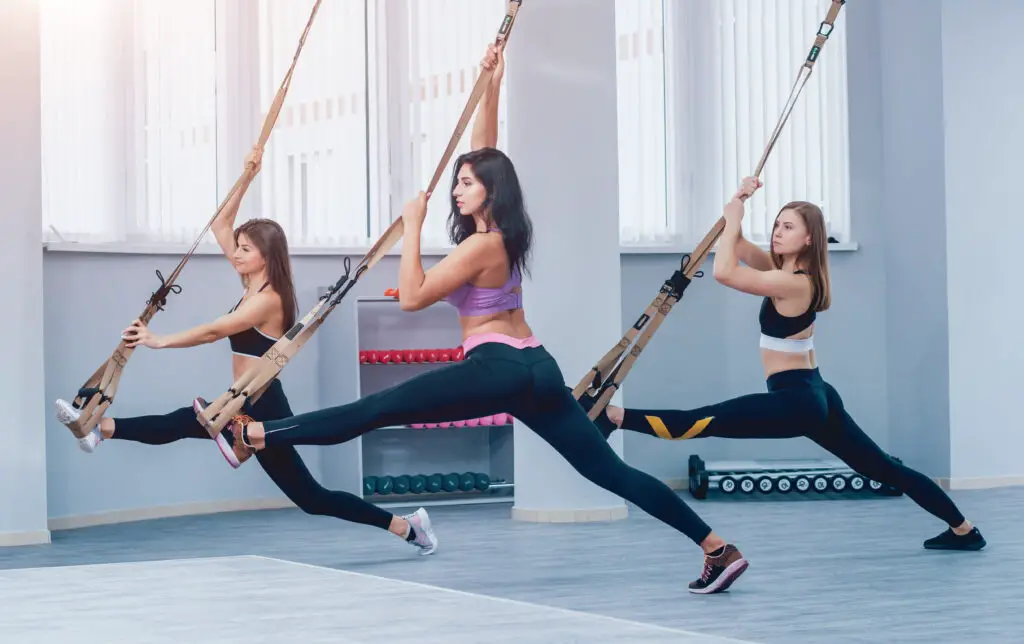
Building Strength with Rope Yoga
Incorporating strength-building elements into your yoga practice is a significant advantage of rope yoga. Let’s explore how ropes help engage different muscle groups and enhance strength.
Utilizing Resistance for Muscle Engagement
Ropes provide resistance that engages various muscle groups in each pose. This leads to improved muscle tone and strength throughout the body.
Core Strengthening with Rope Support
The core is a focal point in many rope yoga poses, and the support of ropes allows practitioners to engage and strengthen their core muscles effectively.
Leg and Arm Strength in Rope-Enhanced Poses
Poses like the half moon and standing poses benefit from the use of ropes by requiring practitioners to engage and strengthen their legs and arms simultaneously.
Safety Precautions in Rope Yoga
While rope yoga offers numerous benefits, it’s essential to practice with safety in mind. Here are some precautions to consider:
Understanding Your Limits
Knowing your physical limits is crucial in rope yoga. Don’t push yourself too hard or attempt advanced poses if you’re not ready. Always respect your body’s boundaries.
Proper Setup and Adjustment
Correctly setting up your ropes and adjusting them for your body is essential for safety. Ensure that your ropes are secured to a stable structure and that they are adjusted to your height and needs.
Avoiding Overextension
Rope yoga can be intense, and overextending your body can lead to injuries. Practice with mindfulness and pay attention to your body’s signals.
When to Seek Professional Guidance
If you’re new to rope yoga or have any pre-existing medical conditions, consider seeking guidance from a certified rope yoga instructor. They can provide personalized instruction and ensure you practice safely.
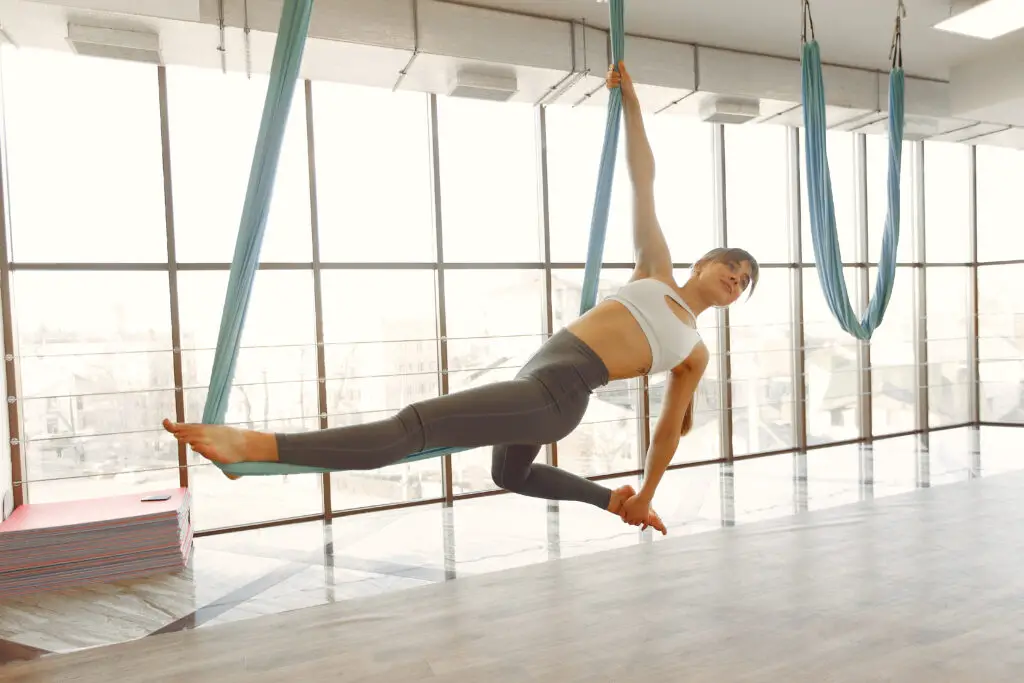
Mental Benefits of Rope Yoga
Rope yoga isn’t just about physical improvements; it also offers a range of mental benefits. Let’s explore how the practice fosters mental well-being.
Fostering Mindfulness
Rope yoga encourages mindfulness by requiring practitioners to be fully present in their practice. This presence promotes a sense of calm and focus.
Stress Reduction and Relaxation
Like traditional yoga, rope yoga is an excellent stress reliever. The combination of deep stretches and relaxation techniques can significantly reduce stress levels.
Enhancing Concentration
Balancing poses and alignment adjustments in rope yoga improve concentration and mental clarity. This heightened focus extends to daily life, aiding in decision-making and problem-solving.
Rope Yoga for Beginners
If you’re new to rope yoga, it’s essential to start slowly and mindfully. Here are some tips for beginners to get started with this practice.
Starting Slowly and Mindfully
Beginners should ease into rope yoga and not
rush into advanced poses. Take the time to understand the fundamentals of rope yoga, and gradually build your practice to prevent injury and ensure a positive experience.
Essential Beginner Poses
For newcomers, it’s beneficial to start with foundational poses that are accessible and provide an introduction to the practice. Poses like the forward fold and supported downward dog are excellent choices for beginners.
Incorporating Props Gradually
As a beginner, you may not be accustomed to using props like ropes and straps. Incorporate these props gradually to get comfortable with their usage and experience their benefits. Start with basic poses and add props as you become more confident.
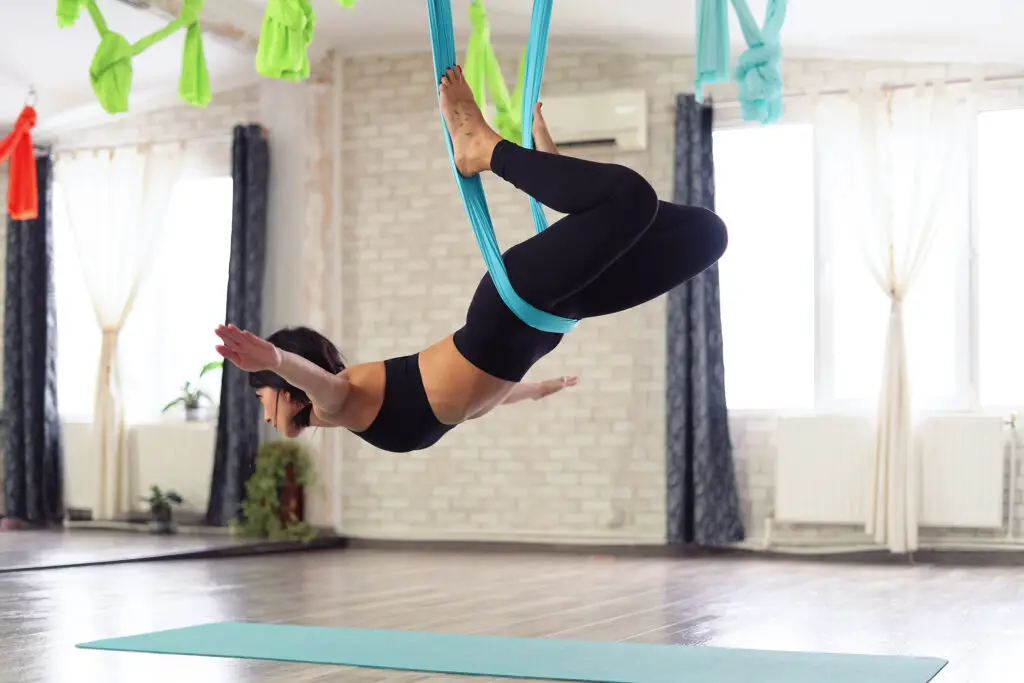
Advanced Rope Yoga Techniques
For those who have mastered the basics, rope yoga offers a plethora of advanced techniques and poses that challenge your strength and flexibility.
Challenging Inversions
Inversions like the full shoulder stand and headstand can be taken to new heights with the support of ropes. These advanced inversions require not only strength but also a deep understanding of balance and alignment.
Deep Backbends with Rope Support
Deep backbends can be intimidating, but with rope support, they become more accessible. Poses like the camel pose and king pigeon pose can be practiced safely with the aid of ropes.
Advanced Balance Poses
Balancing on ropes adds a new dimension to your practice. Advanced balance poses like the extended hand-to-big-toe pose and the rope wall plank challenge your stability and concentration.
Creative Sequences for Seasoned Practitioners
Experienced rope yoga practitioners can experiment with creative sequences that flow seamlessly from one pose to the next. These sequences test your knowledge and capabilities in a dynamic way.
Rope Yoga for Rehabilitation
Rope yoga isn’t solely for advanced practitioners; it can also be a valuable tool for rehabilitation and healing. Here’s how it can aid in the recovery process.
Post-Injury Recovery with Rope Yoga
If you’ve experienced an injury or have limited mobility, rope yoga can be a gentle and effective way to aid in your recovery. The support of ropes allows you to perform therapeutic stretches and regain strength gradually.
Alleviating Chronic Pain
Chronic pain conditions, such as lower back pain, can benefit from rope yoga. The practice’s focus on alignment and gentle stretching can alleviate pain and improve overall well-being.
Rope Yoga in Physical Therapy
Rope yoga is increasingly integrated into physical therapy programs. It provides a holistic approach to rehabilitation, addressing both physical and mental aspects of healing.
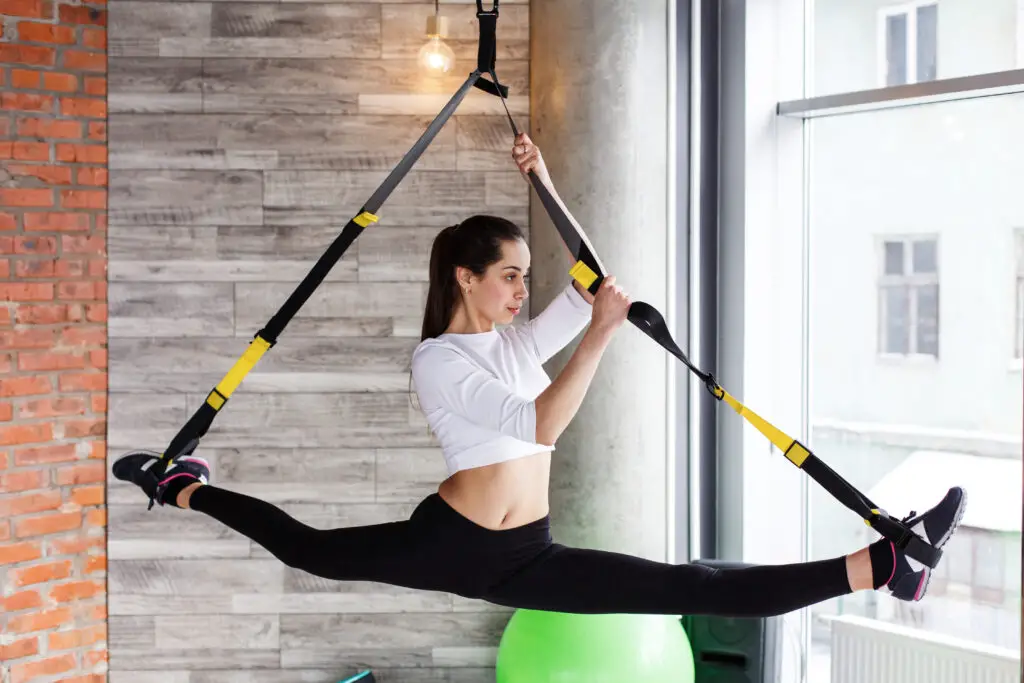
Yoga Philosophy and Rope Yoga
Rope yoga isn’t just about physical postures; it’s deeply rooted in the philosophy of yoga. Let’s explore the integration of yoga philosophy into rope yoga.
The Integration of Yoga Philosophy
Yoga philosophy emphasizes the union of the mind, body, and spirit. Rope yoga aligns with this philosophy by promoting mindfulness, self-awareness, and the journey of self-discovery.
Mind-Body Connection in Rope Yoga
Rope yoga strengthens the mind-body connection, which is a central tenet of yoga philosophy. It encourages practitioners to be fully present in their practice and to connect with their inner selves.
Rope Yoga and Meditation
Meditation and yoga go hand in hand, and rope yoga is no exception. Let’s explore how rope yoga can be a meditative practice.
Meditative Aspects of Rope Yoga
Certain rope yoga poses, especially restorative ones, provide an opportunity for meditation. Practitioners can find inner calm and stillness while supported by ropes.
Yoga Nidra and Savasana
Yoga nidra, a state of conscious relaxation, and savasana, the final relaxation pose, are enhanced with the use of ropes. They offer a deep meditative experience that promotes mental clarity and relaxation.
Rope Yoga: A Holistic Approach
Rope yoga isn’t just about physical postures or meditation; it’s a holistic approach to well-being. Here’s how it combines various elements for a comprehensive practice.
Balancing Physical and Mental Well-being
Rope yoga effectively balances physical and mental well-being. It offers the physical benefits of strength and flexibility while nurturing mindfulness and inner peace.
The Journey of Self-Discovery
Rope yoga is a journey of self-discovery. As you explore your physical capabilities and develop mental clarity, you gain a deeper understanding of yourself.
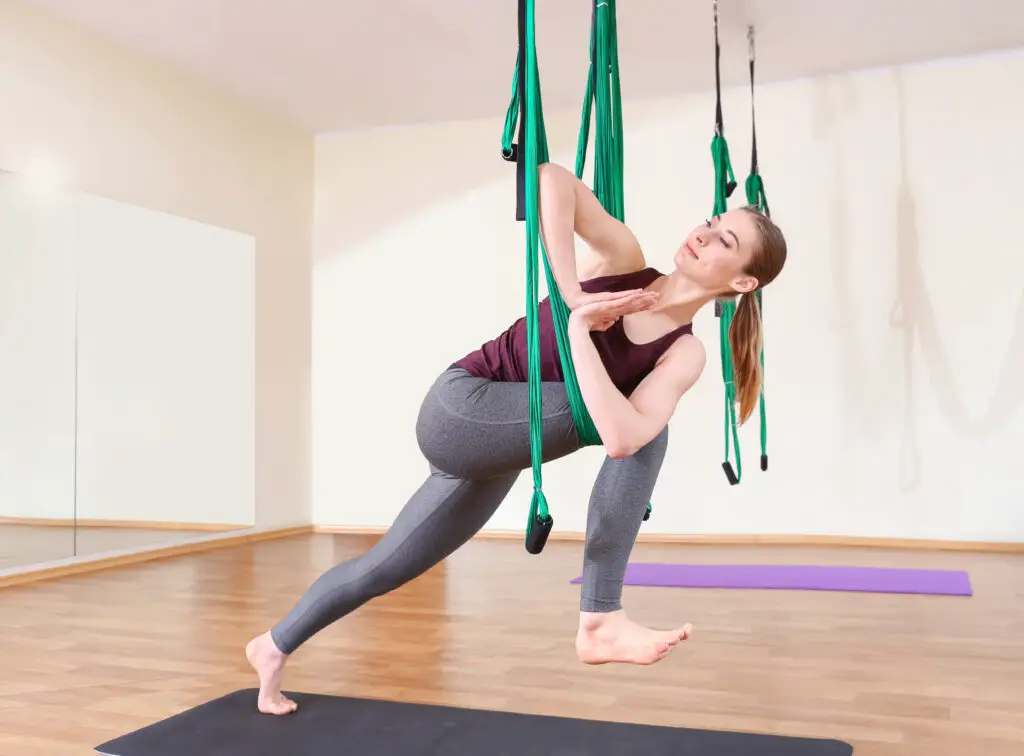
Rope Yoga in Everyday Life
The benefits of rope yoga extend beyond the mat. Here’s how you can incorporate the principles of rope yoga into your daily life.
Incorporating Rope Yoga off the Mat
Mindful living is an essential part of rope yoga. You can apply the principles of mindfulness, alignment, and balance to your daily activities, promoting overall well-being.
Mindful Living and Self-Care
Rope yoga encourages self-care. By nurturing your mind and body through practice, you develop a strong foundation for a healthy and balanced life.
Rope Yoga: A Global Phenomenon
Rope yoga has gained popularity worldwide and is now practiced in various countries. Let’s explore its global presence.
Rope Yoga Schools and Retreats Worldwide
Rope yoga schools and retreats have sprung up across the globe, offering a diverse range of experiences for practitioners. These venues provide the opportunity to immerse yourself in rope yoga and explore its benefits in different settings.
Influential Rope Yoga Practitioners
Influential rope yoga practitioners and instructors have emerged, sharing their expertise and passion for the practice. These individuals have played a significant role in the global growth of rope yoga.
Getting Started with Rope Yoga
If you’re ready to start your rope yoga journey, here are some essential steps to take.
Finding a Rope Yoga Class or Instructor
To get started with rope yoga, consider finding a local class or instructor who can guide you through the practice. Experienced guidance can significantly enhance your understanding and safety.
Setting Up a Home Rope Yoga Space
For those who prefer to practice at home, setting up a dedicated rope yoga space is essential. Ensure you have a secure wall or structure to attach your ropes, and create a tranquil environment for your practice.
Choosing the Right Equipment
Selecting the right ropes, straps, and other equipment is crucial. Invest in high-quality, durable props to ensure your safety and comfort during practice.
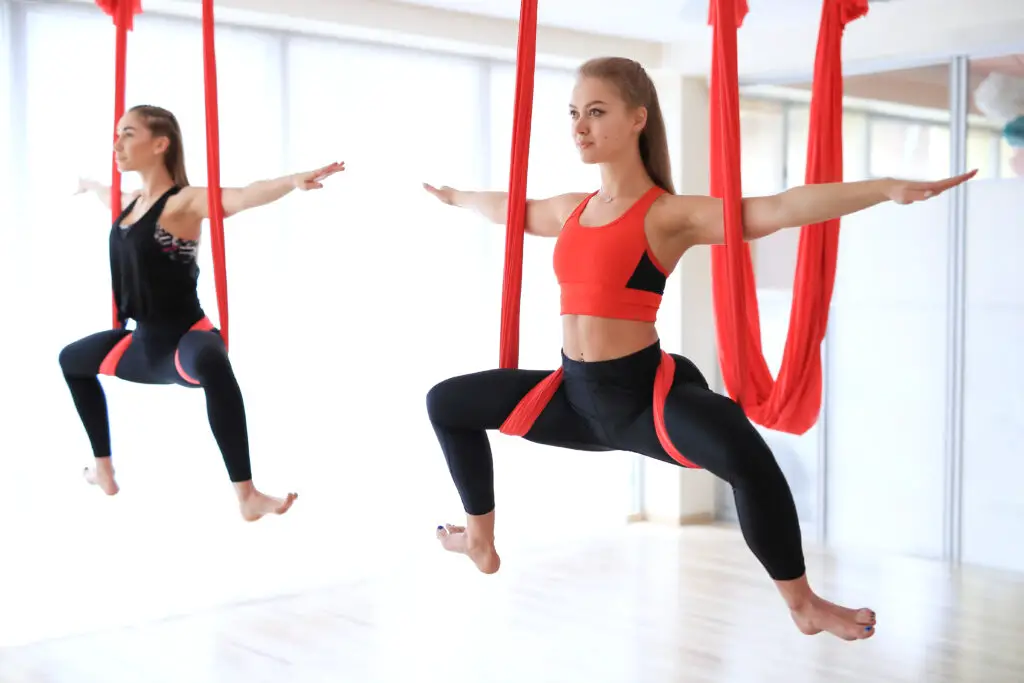
Rope Yoga and Other Yoga Styles
Rope yoga can be integrated with other yoga styles, creating a diverse and enriching practice. Let’s explore how it complements different forms of yoga.
Combining Rope Yoga with Hatha Yoga
Hatha yoga emphasizes alignment and balance, making it a natural complement to rope yoga. The two practices work well together, enhancing each other’s benefits.
Rope Yoga and Vinyasa Flow
Vinyasa flow is a dynamic style of yoga that focuses on breath and movement. The support of ropes in vinyasa sequences adds a new dimension to the practice, enabling smoother transitions and deeper stretches.
Ashtanga and Rope Yoga Fusion
Ashtanga yoga is known for its vigorous and structured sequences. Combining it with rope yoga allows practitioners to navigate challenging postures with greater ease and alignment.
Rope Yoga for Children and Seniors
Rope yoga is adaptable to different age groups, making it suitable for children and seniors. Let’s explore how it can be customized for these demographics.
Adaptations for Different Age Groups
Rope yoga can be adapted for various age groups. For children, the focus may be on making the practice playful and engaging, while for seniors, the emphasis is on gentle movements and enhanced stability.
The Benefits of Rope Yoga for Seniors
Seniors can benefit greatly from rope yoga. The practice enhances mobility, balance, and strength, addressing common age-related concerns and promoting overall well-being.
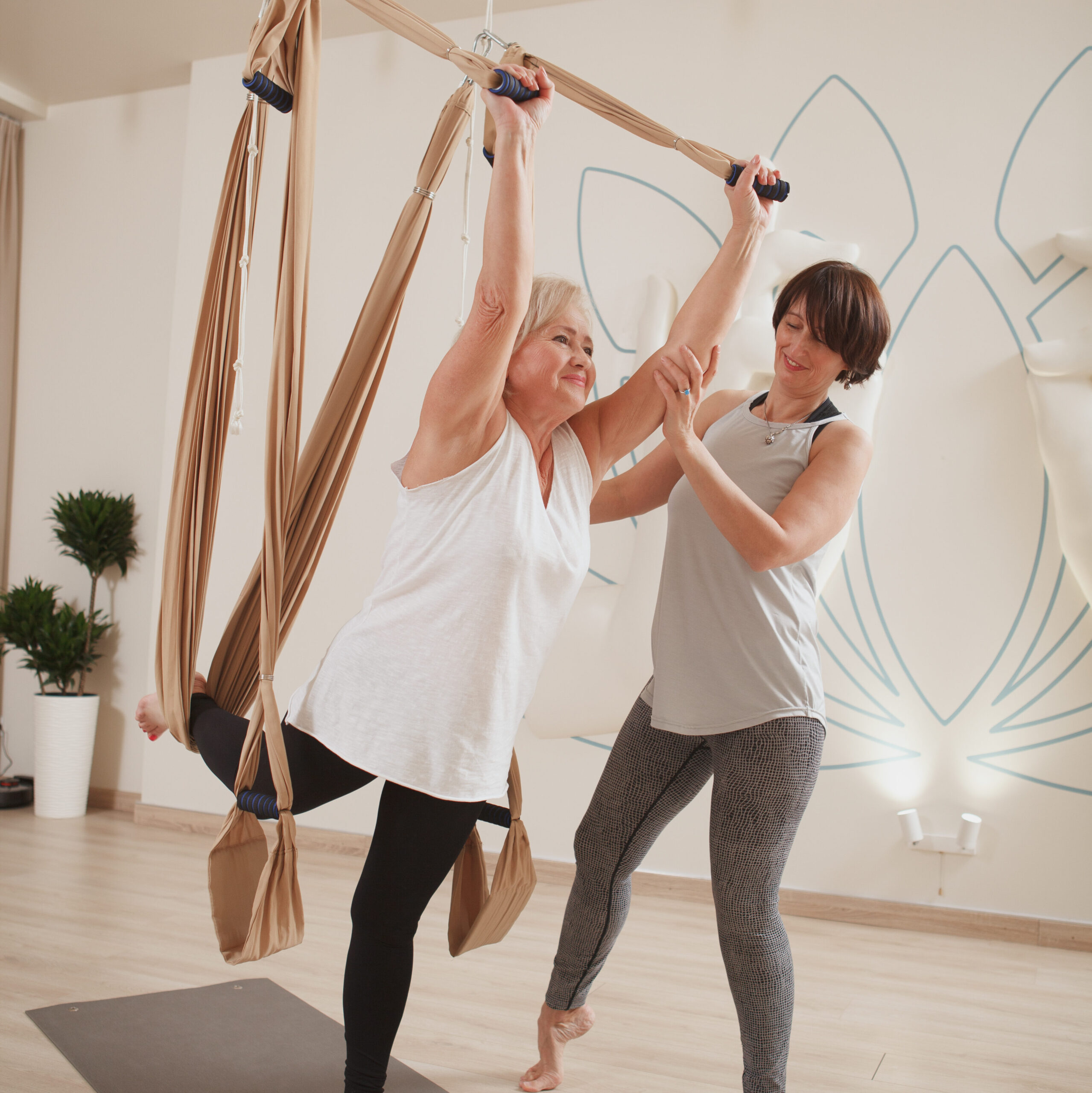
Conclusion:
Rope yoga is a transformative and inclusive practice that offers a myriad of physical, mental, and emotional benefits. Whether you’re an experienced yogi looking to deepen your practice or a beginner seeking a unique way to improve your well-being, rope yoga has something to offer everyone.
Incorporating elements of mindfulness, alignment, strength, and flexibility, rope yoga provides a holistic approach to health and self-discovery. It encourages practitioners to explore their limits, both physically and mentally, and offers a path to inner peace and balance.
So, if you’re ready to take your yoga journey to new heights and explore the world of rope yoga, remember to start slowly, practice mindfully, and consider seeking guidance from certified instructors. As you delve deeper into the practice, you’ll unlock its full potential and experience the incredible transformation it can bring to your life.
https://www.youtube.com/watch?v=uUdQCpNJveU
Frequently Asked Questions (FAQs):
- What is rope yoga, and how does it differ from traditional yoga?
- Rope yoga, also known as yoga with props, is a form of yoga that incorporates the use of specialized ropes and straps to enhance flexibility, alignment, and strength in various poses. It differs from traditional yoga by integrating props that provide support and enable deeper stretches and better alignment.
- Rope yoga, also known as yoga with props, is a form of yoga that incorporates the use of specialized ropes and straps to enhance flexibility, alignment, and strength in various poses. It differs from traditional yoga by integrating props that provide support and enable deeper stretches and better alignment.
- Who can benefit from rope yoga?
- Rope yoga is suitable for practitioners of all levels, from beginners to experienced yogis. It offers benefits in terms of flexibility, strength, and mindfulness, making it a versatile practice.
- Rope yoga is suitable for practitioners of all levels, from beginners to experienced yogis. It offers benefits in terms of flexibility, strength, and mindfulness, making it a versatile practice.
- What are the primary benefits of rope yoga?
- Rope yoga offers a range of benefits, including improved flexibility, enhanced strength, better alignment, stress relief, and increased mind-body awareness. It also promotes mental well-being and concentration.
- Rope yoga offers a range of benefits, including improved flexibility, enhanced strength, better alignment, stress relief, and increased mind-body awareness. It also promotes mental well-being and concentration.
- How does rope yoga improve alignment and safety in yoga poses?
- The ropes in rope yoga serve as guides for achieving proper alignment. They assist practitioners in making precise adjustments, reducing the risk of injury and ensuring that poses are performed correctly.
- Can rope yoga be used for rehabilitation and pain relief?
- Yes, rope yoga is valuable for post-injury recovery and for alleviating chronic pain. It provides a gentle and supportive approach to rehabilitation, helping individuals regain strength and flexibility.
- Yes, rope yoga is valuable for post-injury recovery and for alleviating chronic pain. It provides a gentle and supportive approach to rehabilitation, helping individuals regain strength and flexibility.
- Is rope yoga suitable for children and seniors?
- Rope yoga can be adapted for different age groups. For children, it can be made playful and engaging, while for seniors, it offers gentle movements, enhanced stability, and improved mobility.
- Rope yoga can be adapted for different age groups. For children, it can be made playful and engaging, while for seniors, it offers gentle movements, enhanced stability, and improved mobility.
- How can I get started with rope yoga?
- To begin your rope yoga journey, you can find a local class or instructor who can guide you through the practice. Alternatively, you can set up a home rope yoga space and invest in the necessary equipment.
- To begin your rope yoga journey, you can find a local class or instructor who can guide you through the practice. Alternatively, you can set up a home rope yoga space and invest in the necessary equipment.
- What are the potential risks of rope yoga, and how can they be mitigated?
- Like any physical activity, rope yoga carries some risks if not practiced mindfully. Understanding your limits, setting up the ropes correctly, avoiding overextension, and seeking professional guidance when needed are key steps to ensure safety.
- Like any physical activity, rope yoga carries some risks if not practiced mindfully. Understanding your limits, setting up the ropes correctly, avoiding overextension, and seeking professional guidance when needed are key steps to ensure safety.
- How does rope yoga integrate with yoga philosophy and meditation?
- Rope yoga aligns with yoga philosophy by promoting mindfulness, self-awareness, and the mind-body connection. It also offers opportunities for meditation in specific poses, fostering inner calm and stillness.
- Rope yoga aligns with yoga philosophy by promoting mindfulness, self-awareness, and the mind-body connection. It also offers opportunities for meditation in specific poses, fostering inner calm and stillness.
- Can rope yoga be combined with other yoga styles?
- Yes, rope yoga can be integrated with other yoga styles like Hatha, Vinyasa, and Ashtanga. It complements these styles by enhancing alignment, balance, and flexibility in their respective sequences.
- Yes, rope yoga can be integrated with other yoga styles like Hatha, Vinyasa, and Ashtanga. It complements these styles by enhancing alignment, balance, and flexibility in their respective sequences.
- What are the mental benefits of rope yoga?
- Rope yoga fosters mindfulness, reduces stress, and enhances concentration. It encourages practitioners to be fully present in their practice, promoting a sense of calm and clarity.
- Rope yoga fosters mindfulness, reduces stress, and enhances concentration. It encourages practitioners to be fully present in their practice, promoting a sense of calm and clarity.
- Are there any famous rope yoga practitioners or schools worldwide?
- Yes, rope yoga has gained global recognition, and there are renowned rope yoga practitioners and schools worldwide. They have played a significant role in the practice’s expansion and development.
